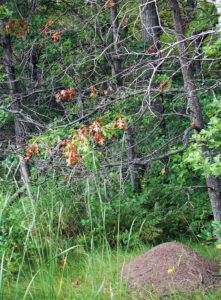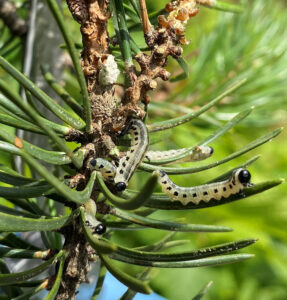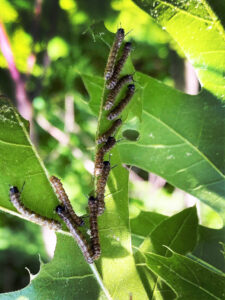
Dead branch tips on an oak tree caused by Kermes scale feeding. Note the ant mound in the lower right. Ants protect scale insects and collect sweet honeydew from the scales. / Photo Credit: Wisconsin DNR
By Linda Williams, DNR Forest Health specialist, Woodruff
Linda.Williams@wisconsin.gov or 920-360-0665
Botryosphaeria canker and kermes scale can cause symptoms that look similar at first glance. Both can cause the outer tips of branches to die, with leaves turning tan/brown while remaining attached to the branch.
Continue reading “Botryosphaeria Canker, Kermes Scale Can Kill Oak Branch Tips”



